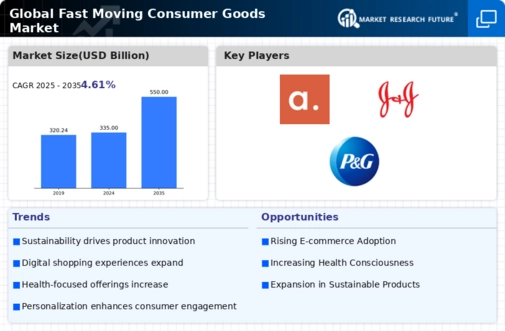Market Trends
Key Emerging Trends in the Fast Moving Consumer Goods Market
Market share positioning strategies are integral for businesses operating in the fast-moving consumer goods (FMCG) market, where competition is fierce and consumer preferences evolve rapidly. These strategies are employed to establish a distinct position within the market, enabling companies to capture a significant portion of market share. In the realm of FMCG, several effective positioning strategies are commonly utilized to gain a competitive edge and attract customers.
One of the primary positioning strategies in the FMCG market is differentiation. Differentiation involves offering unique features, formulations, or packaging that set a product apart from competitors. For example, FMCG companies may develop products with innovative flavors, convenient packaging formats, or sustainable ingredients to appeal to environmentally conscious consumers. By emphasizing these distinctive features, companies can position their products as preferred choices in the market, appealing to consumers who prioritize convenience, quality, or sustainability.
Targeting specific market segments is another key positioning strategy in the FMCG market. Rather than attempting to appeal to all consumers, companies may focus their efforts on niche segments with specific needs or preferences. For instance, a company might tailor its FMCG products for health-conscious consumers by offering low-sugar or gluten-free options, or for busy families by providing time-saving meal solutions. By understanding the unique requirements of different consumer segments, companies can tailor their marketing efforts and product offerings to effectively meet those needs.
Pricing strategy plays a crucial role in market share positioning within the FMCG market. Companies may position their products as either premium or value offerings based on factors such as brand equity, product quality, and target market preferences. For example, FMCG brands may justify premium pricing by emphasizing superior quality, premium ingredients, or brand heritage. Conversely, companies may opt for competitive pricing strategies to appeal to price-sensitive consumers and gain market share through affordability.
Branding and marketing efforts are essential components of market share positioning in the FMCG market. Companies invest in building strong brands that convey trust, reliability, and relevance to consumers. Effective branding strategies help companies establish emotional connections with their target audience and differentiate themselves from competitors. For instance, FMCG brands may use storytelling, social media engagement, and celebrity endorsements to create brand loyalty and preference among consumers.
Distribution channels and partnerships are critical aspects of market share positioning in the FMCG market. Companies must ensure that their products are readily available to consumers through a variety of channels, including supermarkets, convenience stores, online retailers, and vending machines. By partnering with distributors, retailers, and e-commerce platforms, companies can expand their reach and access new customer segments. Additionally, strategic partnerships with complementary brands or organizations can create opportunities for cross-promotion and co-branding initiatives, further strengthening the positioning of the products in the market.






Leave a Comment